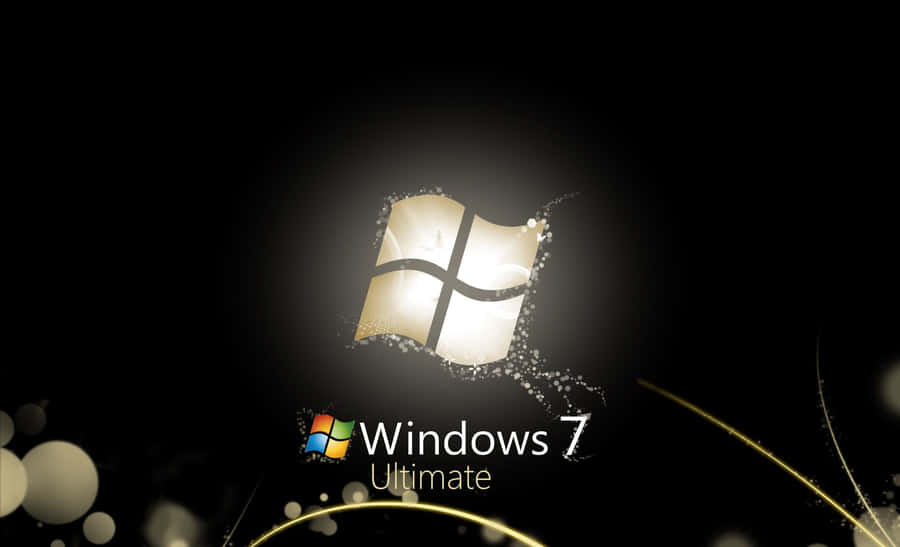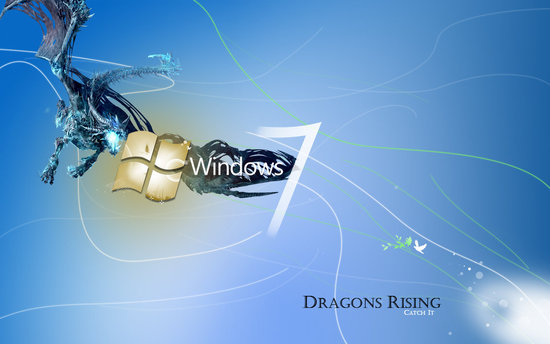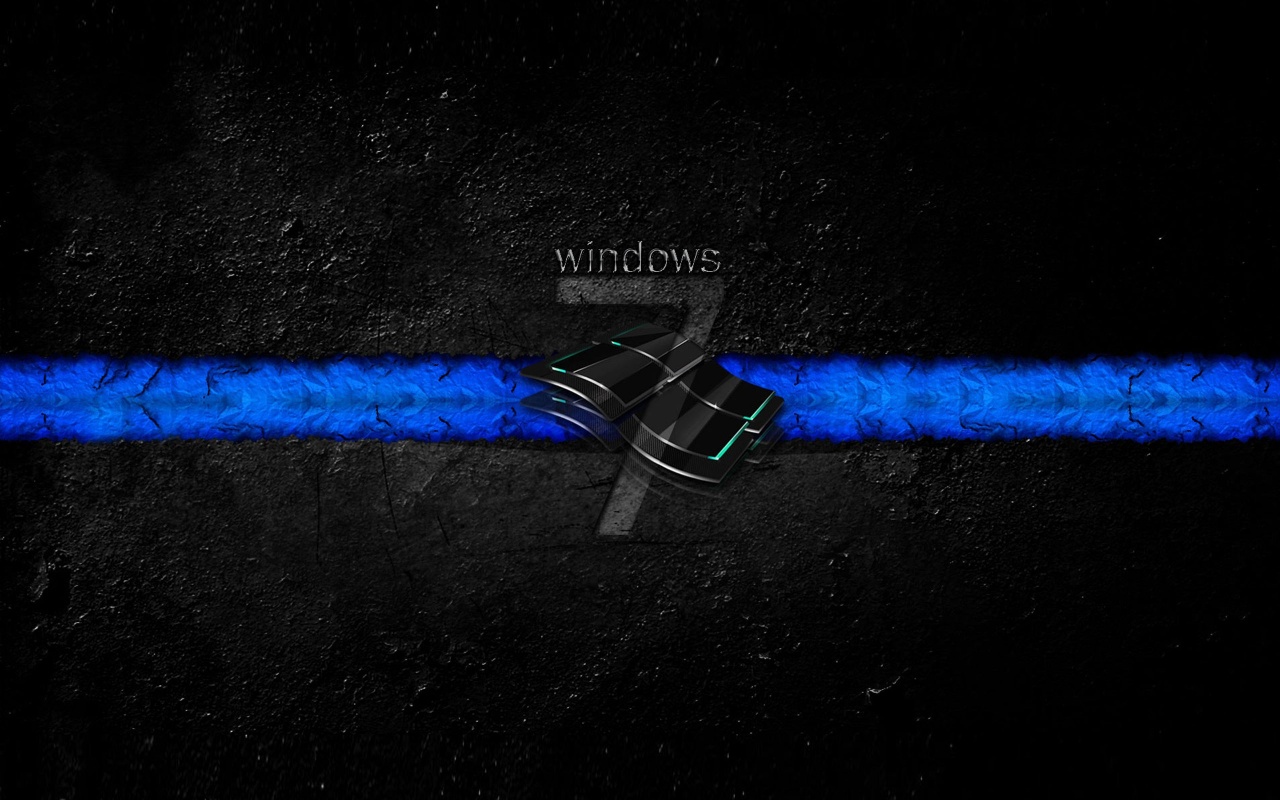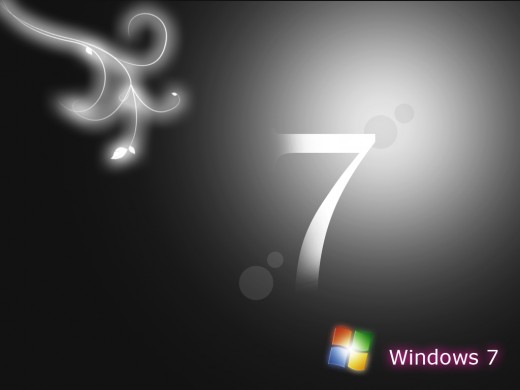Animated Wallpaper Windows 7 Biography:
Similar to the transition from Windows XP to Windows Vista, certain capabilities and programs that are present in Windows Vista are no longer present in Windows 7 or have changed. The following is a list of features that originated in earlier versions of Windows and included up to Windows Vista.
Windows Shell
* Running Explorer as administrator is not possible in Windows 7 because of a DCOM restriction.
* Control Panel views are limited to Small icons and Large icons (which is actually Tiles view). List view, Details view, Extra large icons view, Large icons view and Medium icons view with text at the bottom are not available.
* Some Control Panel settings, such as Add Hardware, Bluetooth, Game Controllers, Pen and Touch, People Near Me, Tablet PC Settings, Offline Files, and Scanners and Cameras, are not listed, even under All Control Panel Items. The 32-bit Speech applet is no longer accessible through the Control Panel. While some of these settings are accessible only from Category view, or by searching, they can be made accessible via All Control Panel Items with a modification to the registry.
* The slide show button from Windows Explorer starts the Windows Photo Viewer, which unlike Windows Live Photo Gallery, does not support viewing slide shows with themes and rich transitions.
* It is not possible to run the 32-bit version of Windows Explorer as a file manager or as the shell in 64-bit editions of Windows 7.[1] 64-bit editions of Windows Vista and Windows XP allowed executing the 32-bit shell/Windows Explorer and making it the default for compatibility with shell extensions. As a result, all 32-bit shell extensions are incompatible with 64-bit versions of Windows 7.
* Because of the Software Explorer being removed from Windows Defender, there is no user notification any more if UAC blocks a startup program which needs administrator privileges. Users were notified about blocked startup programs set to run as administrator in Windows Vista.[2]
* An undocumented incompatible Items view control replaces the List view control[3] used in Windows Explorer and Start Menu breaking applications that customized the Explorer list view control.[4] The Item view also does not support custom positioning, custom ordering, or hyperlinks, which were supported in the Windows Vista list view.[5] Because the control is undocumented, it is not possible for developers to disable auto arrange or customize views. Because ItemsView is not considered part of the Win32 common controls reusable by developers, the sound for the Select system event no longer plays in Explorer in Windows 7.[6]
* The new items view control also ignores certain desktop.ini parameters like IconArea_Image and IconArea_Text preventing users from setting a background picture for folders. In Windows Vista, this feature was not built-in, however the list view control supported this if shell extensions or folder customization utilities which set the correct desktop.ini parameters and attributes were installed.
* Each toolbar or desk band is forced to be on its own row in Windows Explorer. Windows Explorer forces the RBBS_BREAK style for every band.[7]
* When items are grouped by any criteria, multiple selection of groups by clicking the group header while holding down Ctrl is not possible as could be done in Windows Vista.[8]
* The entire folder tree view in the navigation pane cannot be collapsed vertically as could be done in Windows Explorer on Windows Vista.
* Full row selection cannot be turned off for details view as was possible in Windows Vista.[9]
* The Share overlay icon for shared items in Explorer has been removed.[10]
* When navigating to a folder from a library, it is not possible to view the folder's contents in the view the user has set or customized. The folder uses the library's view.
* The Remember each folder's view settings option to set Explorer to persist or not persist folder views and icon sizes per folder has been removed. [11]
* It is not possible to set Windows Explorer to remember individual folder window sizes and positions. Each folder window shares the same size, and their position cascades as more windows are opened.
* Dotted lines that connect folders and subfolders do not appear as the option to turn off simple folder view is missing.[12][13]
* The size of any selected item(s) is not shown on the status bar but is shown in the details pane just above the status bar. Free disk space is not shown on the status bar and the status bar is not visible by default. The details pane only shows the size of 15 selected items by default and viewing the total size of more than 15 selected items requires clicking "Show more details" each time the selection changes.
* When no items are selected in a folder, neither the details pane nor the status bar show the total size of files in the folder.
* Icons on the command bar in Windows Explorer and common application dialogs for Open/Save.
* Disabling Auto Arrange and Align to Grid is not available in Windows Explorer windows.[14][15] As a result, users can no longer manually arrange items via drag and drop within a folder; this feature is only available on the desktop.
* The bar with column headers for sorting, grouping, filtering and stacking that appears for any view in Windows Vista Explorer only appears for Details view.[16] Even in details view, the column headers only allow sorting and filtering; they no longer allow grouping and stacking. As a result, grouping must be done from the context menu in all views and sorting must also be done from the context menu in all other views except Details view. Filtering by columns can only be done in Details view.
* Automatic horizontal scrolling in the left pane and the horizontal scrollbar have been removed.
* The Arrange By option (called Stack By in Windows Vista) is only available for libraries and folders included in libraries. In addition, users can only Stack By predefined categories depending on the library type. For example, users can only Stack by Folder, Album, Artist, Song, Genre, and Rating for the Music library, whereas in Vista, users could Stack By any properties that exist for a file (common examples would be bit rate, year, composer, play count, etc. for audio files).
* Changing the sort criteria when multiple items are selected causes all items to be de-selected.
* Selection of multiple items is not retained across back and forward navigation.
Animated Wallpaper Windows 7
Animated Wallpaper Windows 7
Animated Wallpaper Windows 7
Animated Wallpaper Windows 7
Animated Wallpaper Windows 7
Animated Wallpaper Windows 7
Animated Wallpaper Windows 7
Animated Wallpaper Windows 7
Animated Wallpaper Windows 7
Similar to the transition from Windows XP to Windows Vista, certain capabilities and programs that are present in Windows Vista are no longer present in Windows 7 or have changed. The following is a list of features that originated in earlier versions of Windows and included up to Windows Vista.
Windows Shell
* Running Explorer as administrator is not possible in Windows 7 because of a DCOM restriction.
* Control Panel views are limited to Small icons and Large icons (which is actually Tiles view). List view, Details view, Extra large icons view, Large icons view and Medium icons view with text at the bottom are not available.
* Some Control Panel settings, such as Add Hardware, Bluetooth, Game Controllers, Pen and Touch, People Near Me, Tablet PC Settings, Offline Files, and Scanners and Cameras, are not listed, even under All Control Panel Items. The 32-bit Speech applet is no longer accessible through the Control Panel. While some of these settings are accessible only from Category view, or by searching, they can be made accessible via All Control Panel Items with a modification to the registry.
* The slide show button from Windows Explorer starts the Windows Photo Viewer, which unlike Windows Live Photo Gallery, does not support viewing slide shows with themes and rich transitions.
* It is not possible to run the 32-bit version of Windows Explorer as a file manager or as the shell in 64-bit editions of Windows 7.[1] 64-bit editions of Windows Vista and Windows XP allowed executing the 32-bit shell/Windows Explorer and making it the default for compatibility with shell extensions. As a result, all 32-bit shell extensions are incompatible with 64-bit versions of Windows 7.
* Because of the Software Explorer being removed from Windows Defender, there is no user notification any more if UAC blocks a startup program which needs administrator privileges. Users were notified about blocked startup programs set to run as administrator in Windows Vista.[2]
* An undocumented incompatible Items view control replaces the List view control[3] used in Windows Explorer and Start Menu breaking applications that customized the Explorer list view control.[4] The Item view also does not support custom positioning, custom ordering, or hyperlinks, which were supported in the Windows Vista list view.[5] Because the control is undocumented, it is not possible for developers to disable auto arrange or customize views. Because ItemsView is not considered part of the Win32 common controls reusable by developers, the sound for the Select system event no longer plays in Explorer in Windows 7.[6]
* The new items view control also ignores certain desktop.ini parameters like IconArea_Image and IconArea_Text preventing users from setting a background picture for folders. In Windows Vista, this feature was not built-in, however the list view control supported this if shell extensions or folder customization utilities which set the correct desktop.ini parameters and attributes were installed.
* Each toolbar or desk band is forced to be on its own row in Windows Explorer. Windows Explorer forces the RBBS_BREAK style for every band.[7]
* When items are grouped by any criteria, multiple selection of groups by clicking the group header while holding down Ctrl is not possible as could be done in Windows Vista.[8]
* The entire folder tree view in the navigation pane cannot be collapsed vertically as could be done in Windows Explorer on Windows Vista.
* Full row selection cannot be turned off for details view as was possible in Windows Vista.[9]
* The Share overlay icon for shared items in Explorer has been removed.[10]
* When navigating to a folder from a library, it is not possible to view the folder's contents in the view the user has set or customized. The folder uses the library's view.
* The Remember each folder's view settings option to set Explorer to persist or not persist folder views and icon sizes per folder has been removed. [11]
* It is not possible to set Windows Explorer to remember individual folder window sizes and positions. Each folder window shares the same size, and their position cascades as more windows are opened.
* Dotted lines that connect folders and subfolders do not appear as the option to turn off simple folder view is missing.[12][13]
* The size of any selected item(s) is not shown on the status bar but is shown in the details pane just above the status bar. Free disk space is not shown on the status bar and the status bar is not visible by default. The details pane only shows the size of 15 selected items by default and viewing the total size of more than 15 selected items requires clicking "Show more details" each time the selection changes.
* When no items are selected in a folder, neither the details pane nor the status bar show the total size of files in the folder.
* Icons on the command bar in Windows Explorer and common application dialogs for Open/Save.
* Disabling Auto Arrange and Align to Grid is not available in Windows Explorer windows.[14][15] As a result, users can no longer manually arrange items via drag and drop within a folder; this feature is only available on the desktop.
* The bar with column headers for sorting, grouping, filtering and stacking that appears for any view in Windows Vista Explorer only appears for Details view.[16] Even in details view, the column headers only allow sorting and filtering; they no longer allow grouping and stacking. As a result, grouping must be done from the context menu in all views and sorting must also be done from the context menu in all other views except Details view. Filtering by columns can only be done in Details view.
* Automatic horizontal scrolling in the left pane and the horizontal scrollbar have been removed.
* The Arrange By option (called Stack By in Windows Vista) is only available for libraries and folders included in libraries. In addition, users can only Stack By predefined categories depending on the library type. For example, users can only Stack by Folder, Album, Artist, Song, Genre, and Rating for the Music library, whereas in Vista, users could Stack By any properties that exist for a file (common examples would be bit rate, year, composer, play count, etc. for audio files).
* Changing the sort criteria when multiple items are selected causes all items to be de-selected.
* Selection of multiple items is not retained across back and forward navigation.
Animated Wallpaper Windows 7
Animated Wallpaper Windows 7
Animated Wallpaper Windows 7
Animated Wallpaper Windows 7
Animated Wallpaper Windows 7
Animated Wallpaper Windows 7
Animated Wallpaper Windows 7
Animated Wallpaper Windows 7
Animated Wallpaper Windows 7
Animated Wallpaper Windows 7
Animated Wallpaper Windows 7
Animated Wallpaper Windows 7
Animated Wallpaper Windows 7
Animated Wallpaper Windows 7
Animated Wallpaper Windows 7
Animated Wallpaper Windows 7
How To set a WMV or MPEG file as your Desktop Background in Windows 7
Animated Wallpaper Windows 7
HD DreamScenes on Windows 7 (Animated Wallpaper)
Animated Wallpaper Windows 7
Windows 7 Animated Wallpapers
Animated Wallpaper Windows 7
How to install animated wallpapers in Win7 Vista FREE
Animated Wallpaper Windows 7
















No comments:
Post a Comment